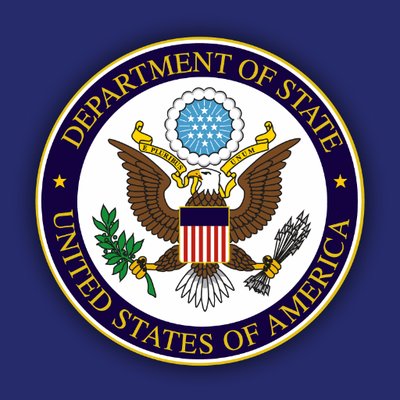The recent landslide victory of the Democratic Progressive Party (DPP) in Taiwan’s local election is drawing attention to the fragile détente between China and Taiwan that has been at the core of the US-China relationship for more than half a century. Since the Nixon pivot, Washington has openly declared its commitment to the “One Country, Two Systems” policy and recognized Beijing’s political representation in international organizations over Taipei. At the same time Washington has ensured that U.S. nautical superiority will not allow Beijing much tactical or strategic space to maneuver in case of a “strait crisis.”
If left unchecked, however, DPP’s support for Taiwan’s continued independence— which is written into the party’s founding constitution as well as its national narrative of a Taiwanese tradition that is independent from mainland China—could perhaps lead to a security nightmare and a China-U.S. naval clash. While this a military scenario well simulated in both sides of the Pacific the adverse implications for China-U.S. relations leave no space for military opportunism even if one side predicts victory.
Memories from 1996—when President Bill Clinton ordered two fully armed U.S. Carrier Battle Groups to pass through the Taiwan Strait—have shaped the strategic operational codes of the Chinese military and the politburo of the CPC. While China might have had the military resources to sink U.S. naval forces in its close periphery (quantity has a quality of its own) the strategic escalation that an attack against a U.S. carrier would trigger, led Beijing to de-escalate. Since the importance of Taiwan’s reunification with the mainland remains an indispensible argument in CPC’s rhetoric for the rejuvenation of the Chinese nation, China’s officials have long strategized how to neutralize strategic U.S. superiority in case of a new strait crisis. The 2008 acquisition of an old Soviet aircraft carrier from Ukraine should be seen in this context. The Ukrainian carrier is the missing piece in China’s strategic puzzle in its first island chain and adds new strategic variables to a Sino-U.S. clash over Taiwan.
While China’s 20-year-old aircraft carrier has been ridiculed as an outdated machine that will easily succumb to U.S. technological and tactical superiority, its significance is not tactical or operational, but strategic. As a Chinese professor argued in Tsinghua’s “Beyond Geopolitics Summit” in 2013, the presence of the Chinese carrier would equalize the strategic balance between the two powers in the Taiwanese strait. Xin Chiang argues that it is a strategic suicide for a nuclear power to attack a carrier of another nuclear power and obliterate 5000 elite pilots, engineers, officers and navy men. As Professor Robert Pape put it, such an attack would lead to “predictable unpredictability” by escalating the crisis to a limited tactical nuclear war and, eventually, to a nuclear holocaust. The destruction of a carrier would trigger a chain reaction and military escalation that neither side could control.
In the 1996 crisis the U.S. “carrier monopoly” neutralized Chinese tactical advantage over toward Taiwan by highlighting U.S. strategic dominance. However in a renewed Taiwanese crisis today, China could pass the ball to the U.S. side; for it’s single carrier has created strategic risk parity in the straits. As the Chinese carrier would face-off against the U.S. carriers, a war of nerves would begin. The longer the confrontation and the maneuvering, the greater the possibility for a mistake that would lead to a major hit toward a carrier with perhaps irreversible consequences for the relationship of the two superpowers. As China would enjoy the advantage of playing on its own doorstep with Chinese public opinion fiercely opposing any retreat, the U.S. would have to deescalate and take the conflict to the UN or risk a nuclear confrontation. Thus the “predictable unpredictability” of escalation and MAD (Mutually Assured Destruction) ensures, according to experts, that a U.S.-China aircraft carrier face-off would not be a prolonged confrontation and most importantly, it would end peacefully.
However as Donald Kagan – one of Yale’s most distinguished professors once put it, miscalculations and irrational decisions have been a norm in history while old hatreds and wounded honor inspire dangerous and irrational actions. Even though experts and war simulation models confirm that a potential aircraft carrier face-off would end peacefully, Kagan’s attestation stands as a clear reminder that preempting a clash by dialogue and demilitarizing a conflict zone is the safest path for sustained peace. After all even a U.S. strategic retreat in case of a cross-strait crisis would leave a perhaps irreversible mark on the China-U.S. relationship, increase U.S. embitterment against China and add up to rising securitization.
In their post 1991 engagement China and the United States have proved that their commitment to a peaceful resolution of disputes remains at the forefront of their strategic relationship. From the 1996 strait crisis to the accidental bombing of the Chinese embassy in Belgrade in 1999 to the 2001 U.S. spy plane collision, the U.S. and China have been optimistic about each other’s intentions and mutually de-escalated dangerous confrontations.
Make no mistake that as DPP has an assertive political agenda promoting a distinct Taiwanese identity and de facto independence, Sino-U.S. relations will be tested. Beijing and Washington should preempt any possible cross-strait military build-up and engage in a sincere dialogue about the democratic future of Taiwan in a “one country, two systems” solution. A clash of carriers would be a risky gamble for peace that the world cannot afford.
As a former national security advisor once mentioned, in the most pivotal relationship for peace in our time – the US-China Relationship – seeing the glass half full instead of half empty is an important forma mentis for managing a crisis. The United States and China have shown in their communiqués that the glass in the question of Taiwan is half full and thus the solution should only be political and not military. Managing renewed cross-strait tensions peacefully will be another significant brick in constructing a “new major power” relationship, and keeping the gates of Janus sealed.

